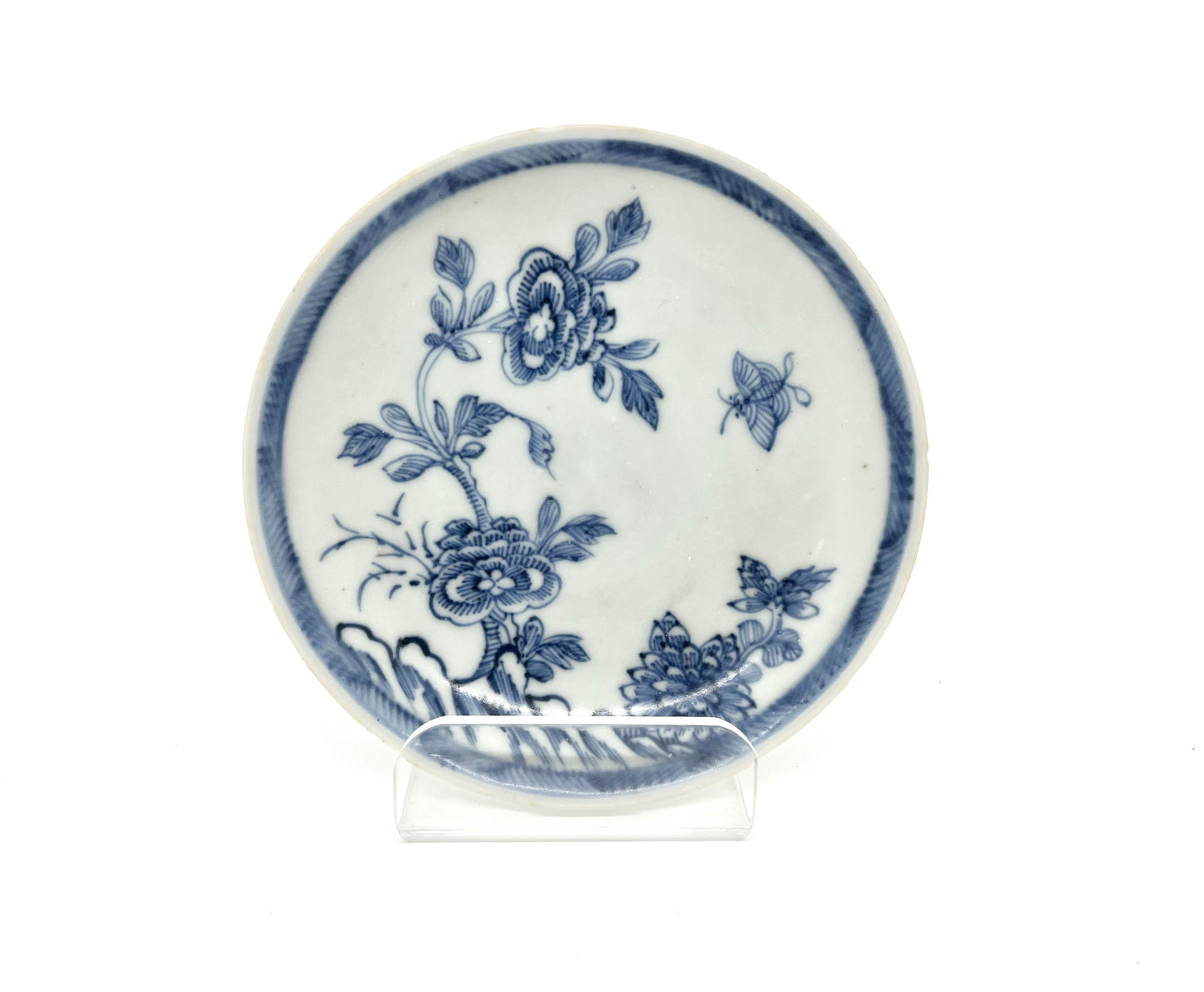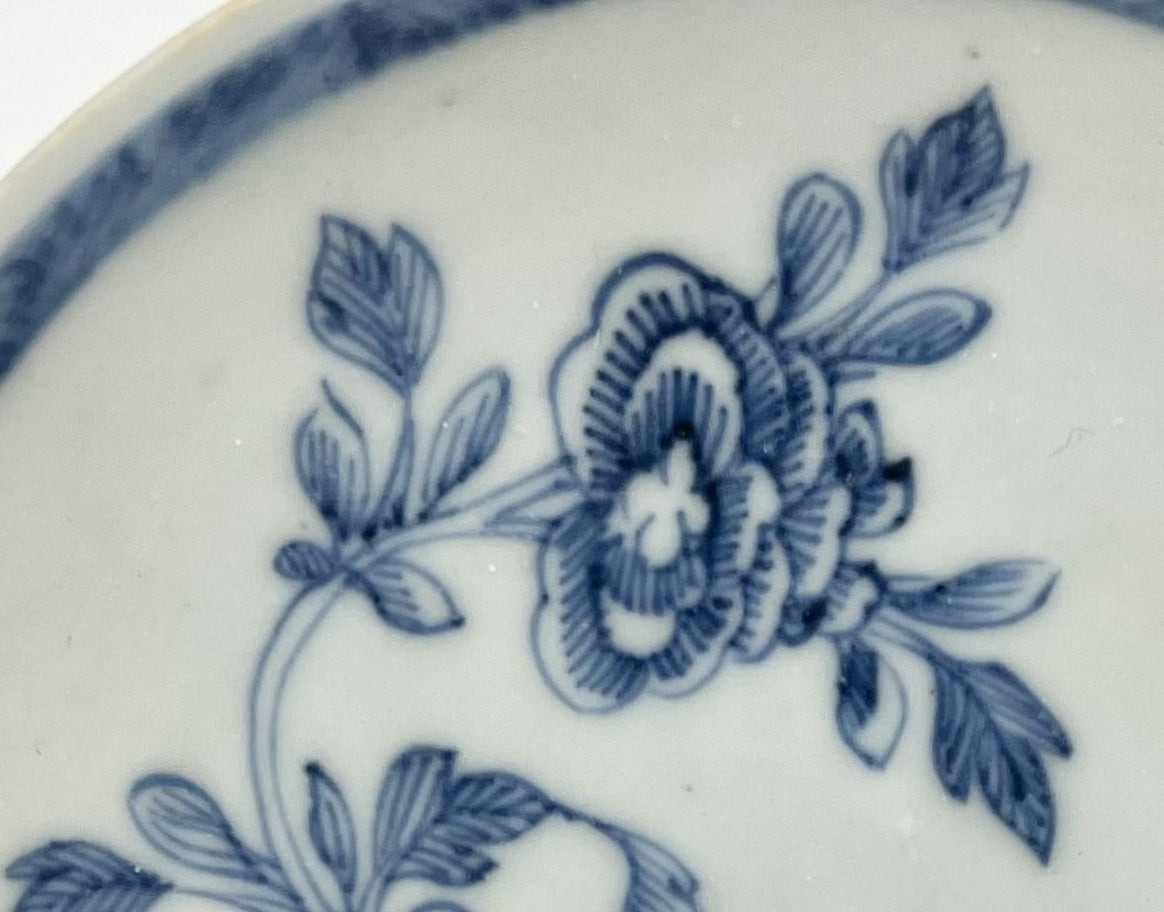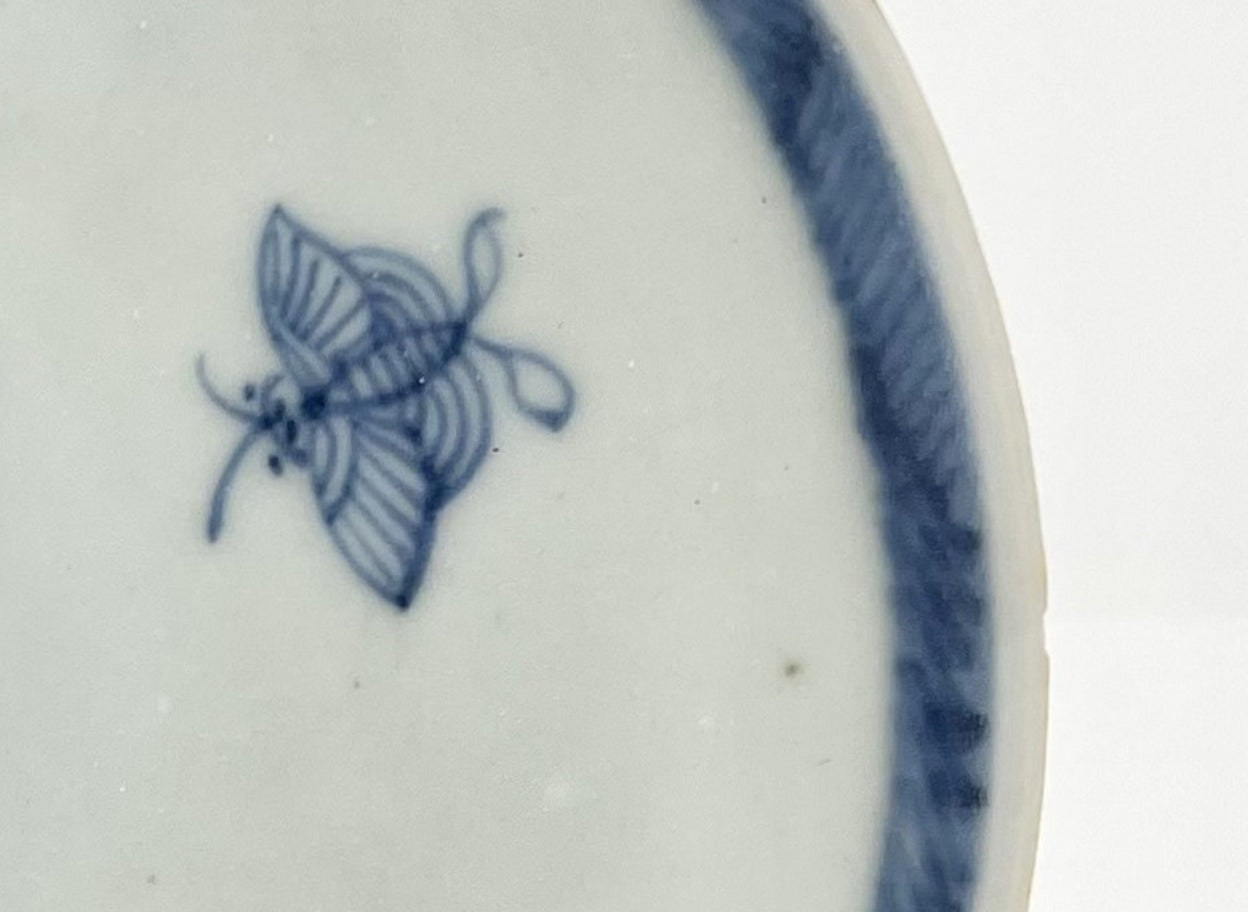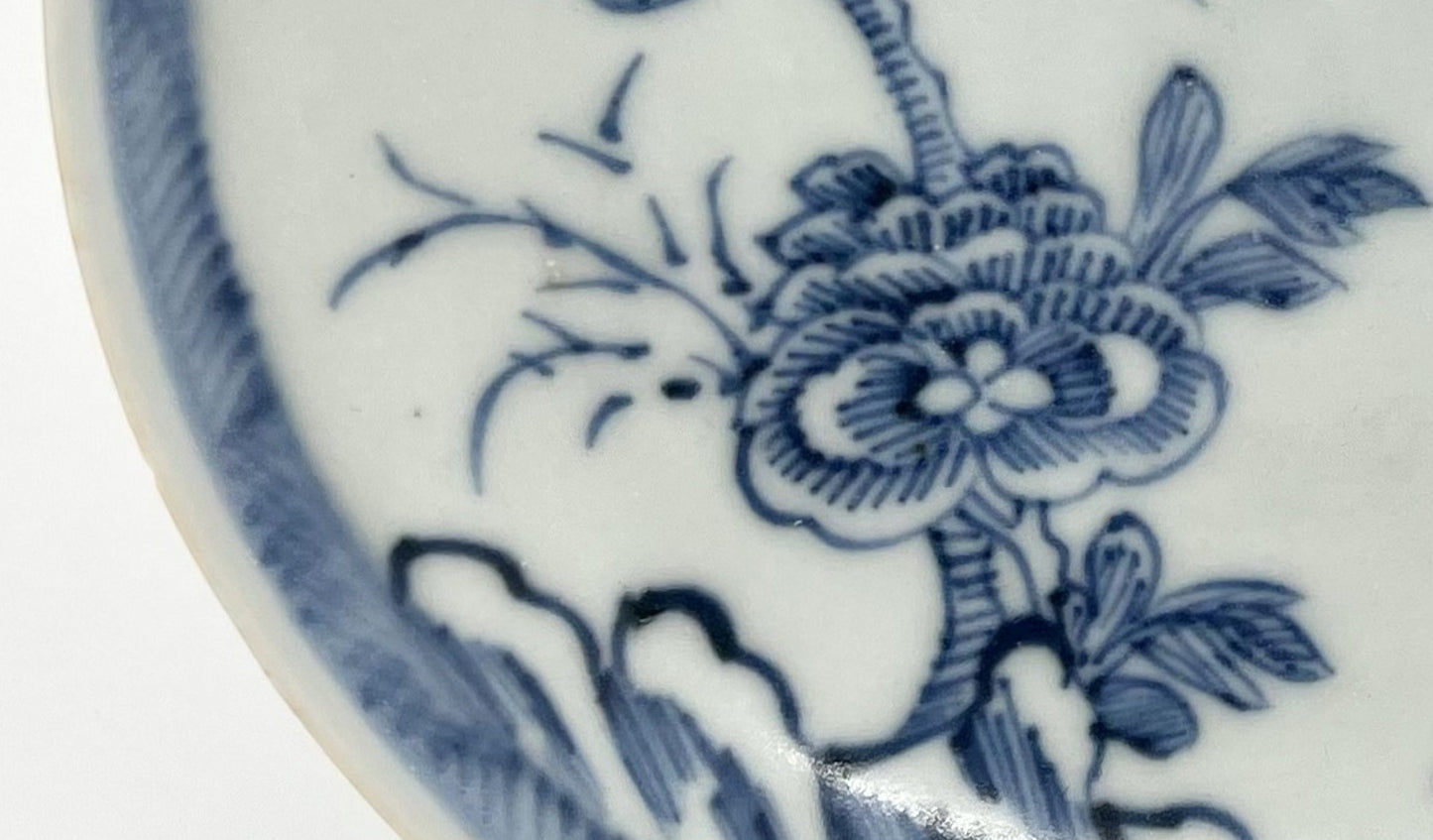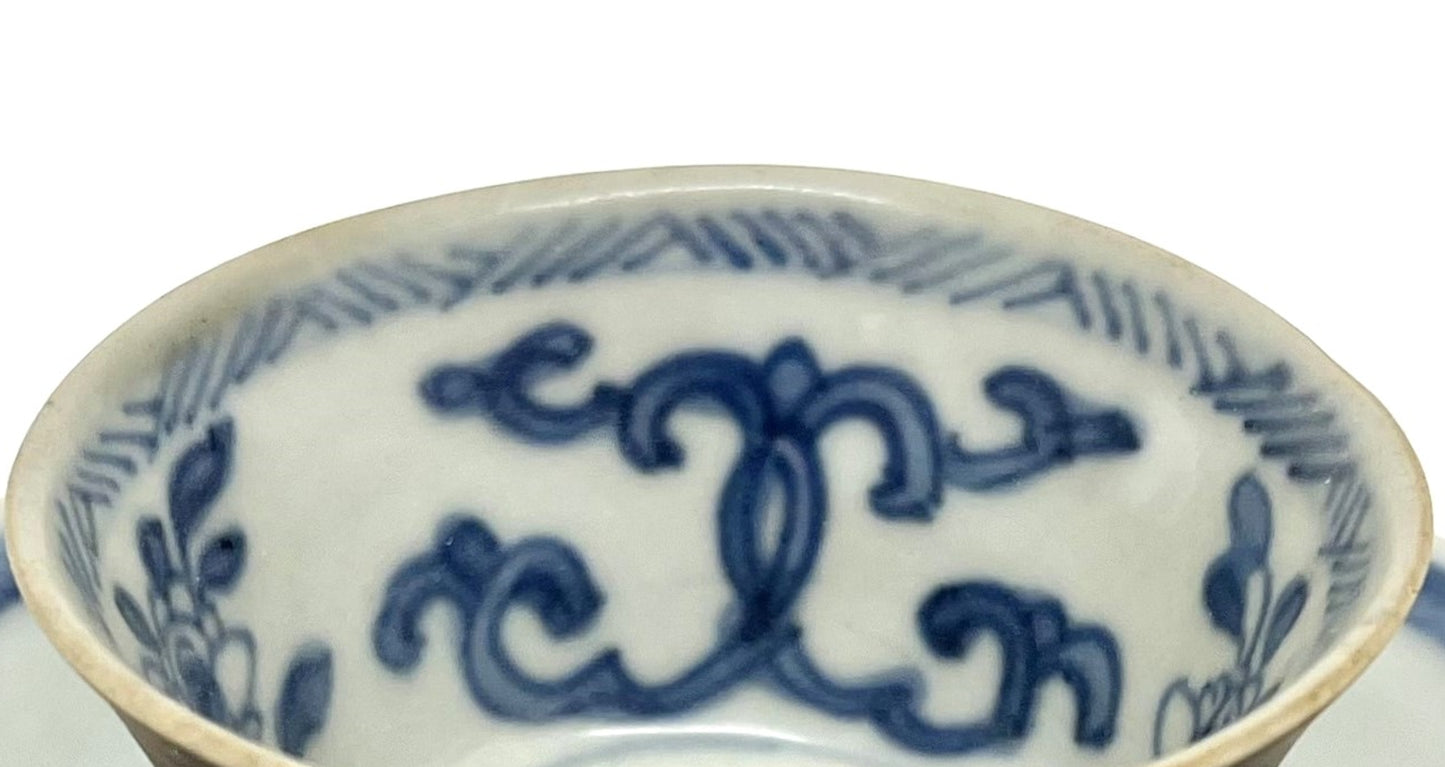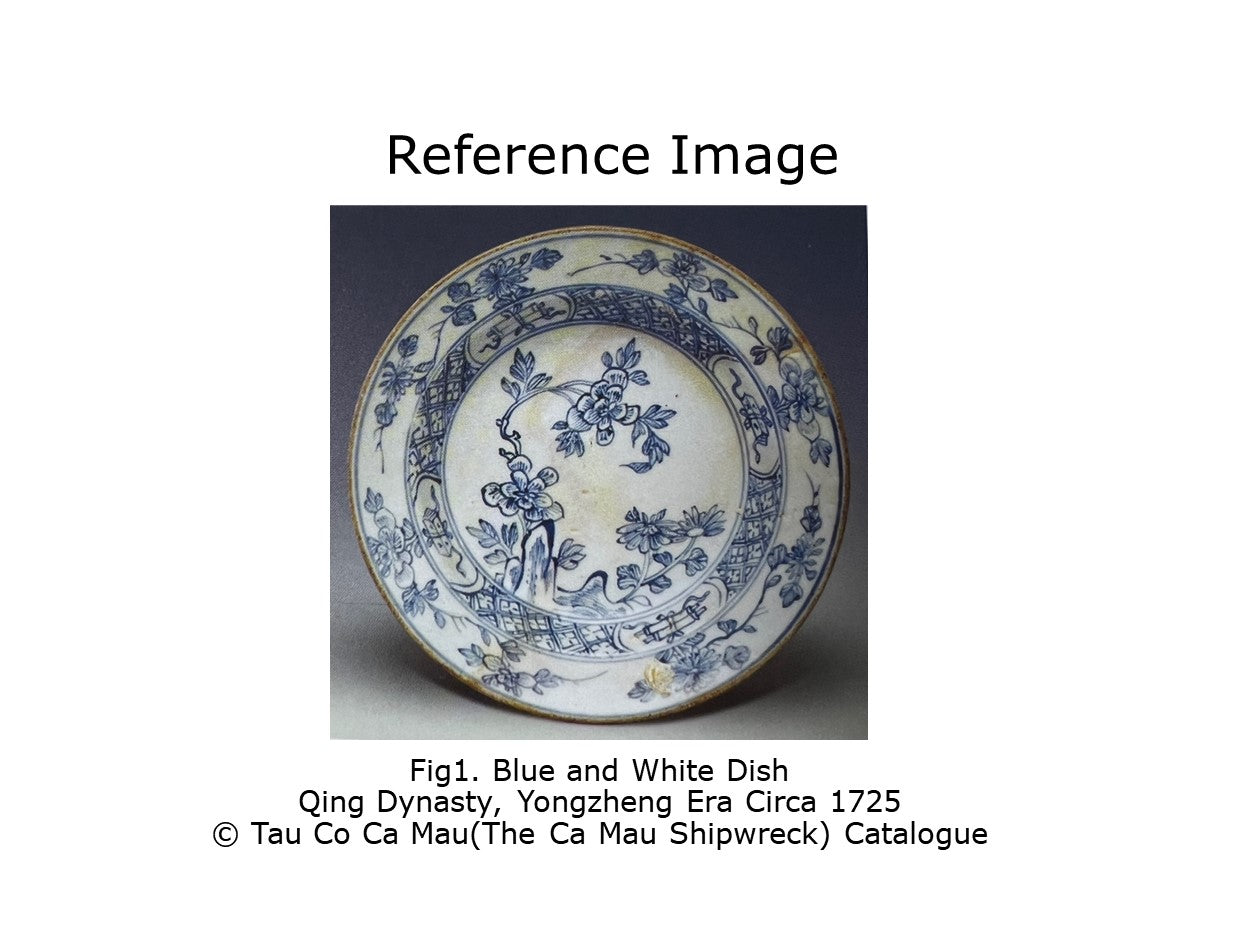AUA Oriental Art
BLUE AND WHITE TEABOWL AND SAUCER SET CIRCA 1725, QING DYNASTY, YONGZHENG ERA
BLUE AND WHITE TEABOWL AND SAUCER SET CIRCA 1725, QING DYNASTY, YONGZHENG ERA
Couldn't load pickup availability
Tea set decorated with beautiful floral(Saucer) and oriental pattern(Tea Bowl)
Period : Qing Dynasty, Yongzheng Period
Production Date : C 1725
Made in : Jingdezhen
Destination : Netherland
Found/Acquired : Southeast Asia , South China Sea, Ca Mau ship
Size : 11.0 cm (Diameter) - SAUCER / 7cm (Diameter) - TEABOWL
Condition : Excellent (Slightly worn)
Reference : Double checked with reference to the original catalogues
1) Tau Co Ca Mau(The Ca Mau Shipwreck) Catalogue 2002 / The National Museum of Vietnamese History
2) THE CA MAU SHIPWRECK PORCELAIN : from the Collection of Dr.Zelnik , 2000
3) Sotheby’s Amsterdam, 2007 : Made In Imperial China / Sotheby's
4) Asian Ceramic Found along Maritime Silk Route / National Maritime Museum of Korea
* Tea as a Cultural Tapestry: The Sophistication of Yongzheng Era Tea Culture
In the Yongzheng era, tea was a symbol of culture and a medium of social grace. It wasn't merely a beverage but a reflection of one's cultural depth and sophistication. People gathered over tea to discuss literature, art, and philosophy, showcasing their knowledge and cultural tastes.
The era was marked by an evolution in tea culture, where brewing techniques, etiquette, and appreciation of tea's subtleties became an art form. A well-brewed cup was a testament to one's refinement. Tea tasting transcended mere drinking; it was about appreciating the aroma, color, and flavor, each sip a statement of cultural appreciation.
Tea ceremonies often included exquisite porcelain, symbolizing a blend of utility and artistry. Each piece of porcelain wasn't just a vessel for tea; it was a canvas showcasing artistic mastery, a subtle nod to one's appreciation of finer things.
An interesting anecdote from this era illustrates this cultural phenomenon: A famous scholar, known for his tea gatherings, once remarked that understanding a person's character was as simple as observing their choice in tea and porcelain. He believed that the tea one chose and the way they handled their cup offered insights into their personality and cultural sophistication.
Thus, in the Yongzheng era, tea culture was not just a pastime but a cultural barometer, gradually permeating through various social strata. It became a subtle yet profound indicator of taste and elegance, weaving itself into the fabric of Chinese culture and leaving a lasting impact on future generations.
Share
